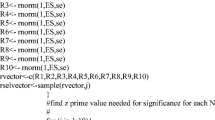Abstract
In journalistic publication, Betteridge’s Law of Headlines stipulates that “Any headline that ends in a question mark can be answered by the word no.” When applied to the titles of academic publication, the assertion is referred to as Hinchcliffe’s Rule and denigrates the use of the question mark in titles as a “click-bait” marketing strategy. We examine the titles of all published articles in the year 2014 from five top-ranked and five mid-range journals in each of six academic fields (n = 7845). We describe the form of questions when they occur, and where a title poses a question that can be answered with a “yes” or “no” we note the article’s substantive answer. We do not find support for the criticism lodged by Betteridge’s Law and Hinchcliffe’s Rule. Although patterns vary by discipline, titles with questions are posed infrequently overall. Further, most titles with questions do not pose yes/no questions. Finally, the few questions that are posed in yes/no terms are actually more often answered with a “yes” than with a “no.” Concerns regarding click-bait questions in academic publications may, therefore, be unwarranted.
Similar content being viewed by others
References
Ball, R. (2009). Scholarly communication in transition: The use of question marks in the titles of scientific articles in medicine, life sciences and physics 1966–2005. Scientometrics, 79(3), 667–679.
Betteridge, I. (2009). TechCrunch: Irresponsible journalism. Technovia.com. http://www.technovia.co.uk/2009/02/techcrunch-irresponsible-journalism.html. Accessed July 25, 2015.
Blom, J. N., & Hansen, K. R. (2015). Click bait: Forward-reference as lure in online news headlines. Journal of Pragmatics, 76, 87–100.
Buter, R. K., & van Raan, A. F. J. (2011). Non-alphanumeric characters in titles of scientific publications: An analysis of their occurrence and correlation with citation impact. Journal of Informetrics, 5, 608–617.
Guerrero-Bote, V. P., & Moya-Anegón, F. (2012). A further step forward in measuring journals’ scientific prestige: The SJR2 indicator. Journal of Informetrics, 6(4), 674–688.
Guerrero-Bote, V. P., & Moya-Anegón, F. (2014). Relationship between downloads and citations at journal and paper levels, and the influence of language. Scientometrics, 101(2), 1043–1065.
Haggan, M. (2004). Research paper titles in literature, linguistics and science: Dimensions of attraction. Journal of Pragmatics, 36, 293–317.
Hamby, S. (2015). On scientific writing in the information era: Tailoring papers for internet searching and other 21st century realities. Psychology of Violence, 5(2), 103–111.
Hyland, K. (2002). What do they mean? Questions in academic writing. Text, 22(4), 529–557.
Jamali, H. R., & Nikzad, M. (2011). Article title type and its relation with the number of downloads and citations. Scientometrics, 88(2), 653–661.
Krajnović, M. M., & Omrčen, D. (2013). Titles of articles in human movement science journals. Studia Romanica et Anglica Zagrabiensia, 57, 123–139.
Maflahi, N., & Thelwall, M. (2015). When are readership counts as useful as citation counts? Scopus versus Mendeley for LIS journals. Journal of the Association for Information Science and Technology,. doi:10.1002/asi.23369.
Shieber, S. M. (2015). Is this article consistent with Hinchliffe’s Rule? Annals of Improbable Research, 21(3), 18–19.
Sisó, M. J. (2009). Titles or headlines? Anticipating conclusions in biomedical research article titles as a persuasive journalistic strategy to attract busy readers. Miscelánea: A Journal of English and American Studies, 39, 29–54.
Soler, V. (2007). Writing titles in science: An exploratory study. English for Specific Purposes, 26, 90–102.
Author information
Authors and Affiliations
Corresponding author
Appendix
Rights and permissions
About this article
Cite this article
Cook, J.M., Plourde, D. Do scholars follow Betteridge’s Law? The use of questions in journal article titles. Scientometrics 108, 1119–1128 (2016). https://doi.org/10.1007/s11192-016-2030-2
Received:
Published:
Issue Date:
DOI: https://doi.org/10.1007/s11192-016-2030-2




